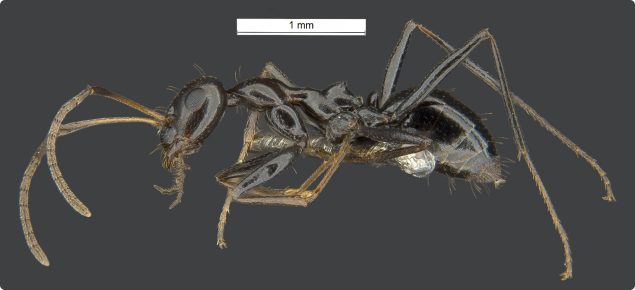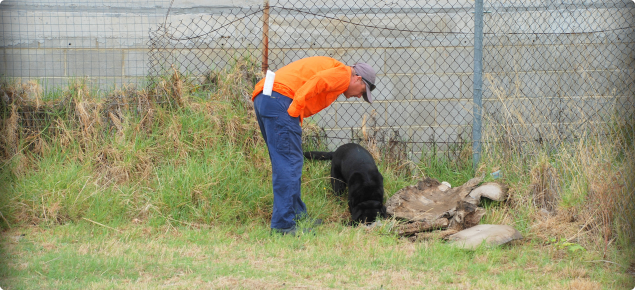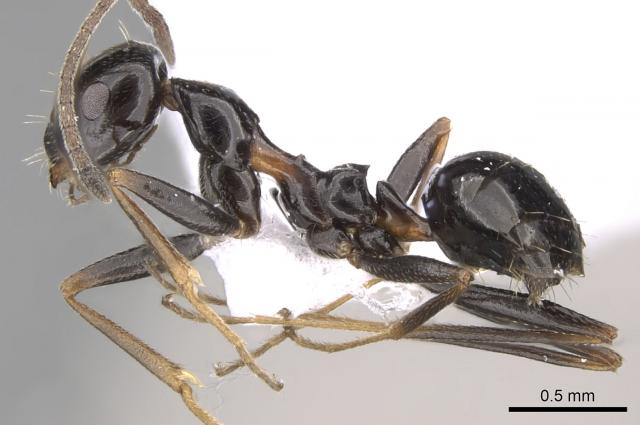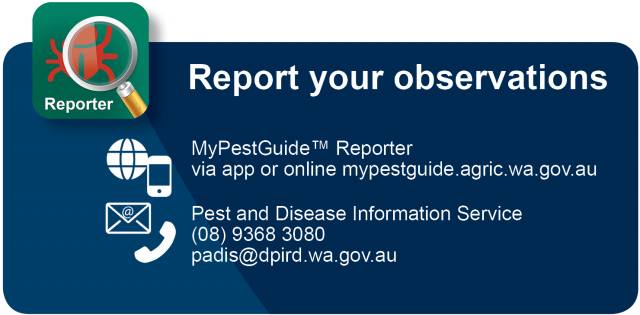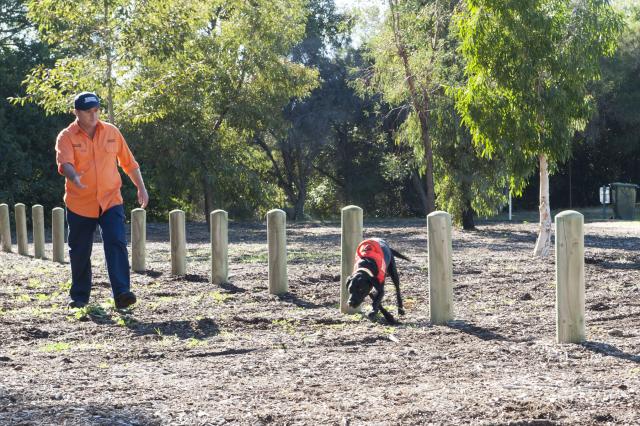Browsing ants thrive in Mediterranean and tropical climates so they are ideally suited to Australian conditions. These aggressive ants form multi-queened super-colonies and monopolise food resources, quickly reaching large numbers. The super-colonies put our native species at risk by killing them for food and competing for resources.
Browsing ants also farm and protect scale insects that can eventually kill the plants they live on. Because of this, the ants present a significant risk to WA's billion-dollar horticultural industry.
These ants are also a potential domestic pest, as they like to forage in kitchens and where food is stored.
While these ants are a threat to our environment, they are not harmful to people or pets.
The first known Australian detection was at Perth Airport in 2013 followed by subsequent detections at commercial properties in Belmont, Kewdale and Welshpool. Browsing ant has since been detected at the Port of Darwin and the Port of Brisbane.
The Perth, Darwin and Brisbane browsing ant detections are now subject to nationally funded eradication programs, funded by Commonwealth and State and Territory governments.
What do I look for?
Browsing ant is native to southern Europe, usually found in Mediterranean regions in the vicinity of the sea. They are considered extremely invasive, having established widely across the globe by 'hitchhiking' in sea containers, household goods, potted plants, rubbish and machinery.
Browsing ants are a slender, shiny, dark brown ant. They are 3– 4 mm in length with long antennae and long legs, and run about in a haphazard manner when disturbed. They do not have a strong 'ant smell' when crushed.
What can I do if I find it?
The community can help contain this pest by reporting any suspect sightings and by being careful not to move ants on goods or vehicles. In particular, they can be moved in shipping containers, soil, mulch, fertiliser and other plant material.
If you suspect you have browsing ants on your property or workplace, you can report it via:
- the MyPestGuide™ Reporter app (preferred option) or online at mypestguide.agric.wa.gov.au
- calling the Pest and Disease Information Service (PaDIS) +61 (0)8 9368 3080.
Alternatively, if you would like to submit a sample:
- Brush ants into a sealed container or zip lock bag and place in the freezer for 1 hour.
- Label container with the collection location (eg. backyard, kitchen, bathroom, driveway etc.), your name, contact number, email address and postal address.
Western Australian detections
In 2013 an exotic ant species was collected at the Perth Airport by Commonwealth biosecurity officers as part of routine surveillance. The infested area, including a 50 metre buffer zone, was identified as 60 hectares.
Browsing ants were subsequently detected in 2014 at Belmont. This was a separate but linked infestation as the ants may have been introduced to the Belmont site via freight from the Perth Airport site.
The infestations at Perth Airport and Belmont were treated with granular baits containing an insect growth regulator designed to sterilise the queens. This treatment has been customised to attract browsing ants and was broadcast across the infested area, followed by a spray treatment two weeks later. Area freedom was declared for the Perth Airport and Belmont in 2016 and 2017 respectively.
Further browsing ant detections were made in Welshpool and Kewdale in 2017, and two browsing ants were detected in Bullsbrook in 2018.
Eradication and surveillance was carried out at Welshpool, Kewdale and Bullsbrook over a two year period with odour detection dogs, and no browsing ants were detected. Clearance surveillance at the three sites was performed in January 2020.
New WA detections
In early 2020 browsing ants were detected in Bayswater and new sites in Welshpool, these detections were linked to known infestations. These sites are currently undergoing treatment, surveillance and tracing activities.
There have also been detections in new areas, Fremantle Port in 2019 and East Rockingham in 2020. Eradication and surveillance is underway in these areas.
Northern Territory detection
A browsing ant detection at Darwin seaport was confirmed in 2015. The National Browsing Ant Eradication Program, tasked with eradicating browsing ant from Western Australia and the Northern Territory, was established in December 2015.
There have been 23 infested premises discovered in Darwin, comprised predominantly of transport and logistics companies that transfer industry equipment and containers. Eradication in the Northern Territory is underway.
Queensland detection
A small infestation of browsing ant was detected at the Port of Brisbane in 2019. Eradication operations are underway, with response activities funded by a national cost-shared arrangement approved by the National Biosecurity Management Group.
Biosecurity and ongoing surveillance
Browsing ant has been declared a pest of national significance by the Australian government. Therefore movement restrictions may apply at infested sites to prevent the transport and spread of this pest. Compliance with these movement restrictions are critical because the further this ant spreads, the harder it is to eradicate.
Following eradication activities, surveillance will be undertaken to detect if there are surviving browsing ants. Eradication may be declared after a two-year period with no evidence of surviving colonies.
In Western Australia, the Northern Territory and Queensland, all known infested areas have been treated and surveillance is continuing until area-freedom can be announced.

